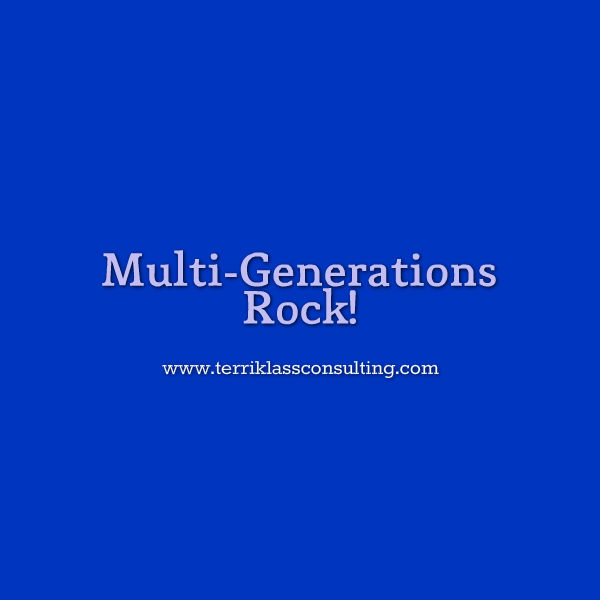“They’re just lazy with no work ethic.”
“They’re way too bossy to listen to.”
“All they care about is being promoted.”
“They think that staying late every night is what is necessary.”
Do any of these statements ring a bell with you? Have you ever heard any of your team members blurt these comments out?
Having more than four generations in the workplace today offers some great opportunities for teams. With each generation sharing valuable strengths and talents, there is no doubt that teams can produce extraordinary outcomes. So why are so many organizations facing generational friction?
There are some leaders who would argue that generational differences don’t really exist. They believe that tension on teams is less about generational dissimilarities and more about personality clashes. From working with leaders and teams, it has become clear that a generational divide often derails the best-intentioned strategies. In fact, when organizations admit that a generational gap may be driving a team’s dysfunction and are willing to address the challenge, eyes are opened and connections begin.
Here are five ways to bridge the four generations:
1. Learn what events shaped each generation
To really see why each generation has certain behaviors and attitudes it is critical to identify the events that impacted them. For example: the Traditionalists were shaped by the Great Depression and as a result have a conservative and frugal view of money; the Baby Boomers were influenced by the Civil Rights movement and continue to question authority; Generation X was impacted by Downsizing and saw their parents laid-off so may see organizations are less loyal; the Millennials were influenced by school shootings and technology advances, bringing security issues into their teams.
[Tweet “Each generation is shaped by the events of their time.”]
2. Understand the different perspectives on work
Each generation views work a little differently, which may cause friction. While Traditionalists work to live, Baby Boomers live to work. Gen X created the work/life balance and the Millennials see work and life and one big continuum. These opposing work ethics can cause some team members to think certain individuals aren’t putting in enough hours at the office, while some generations focus on achieving the end result, not hours worked.
3. Key into the varying communication styles
The four generations prefer to communicate their way and can leave some teammates uneasy. If one is more comfortable with face-to-face interactions while another prefers texting or email, there may be challenges in sharing information. As long as each remains sensitive to the other’s style, there can be high team performance and collaboration.
[Tweet “For team success understand the communication styles of different generations.”]
4. Leverage each generation’s strengths
Each generation brings their abilities, strengths and gifts to their organizations. As long as teams value the different generational contributions, they will have a fulfilling work relationship. Appreciating the institutional wisdom of the Traditionalists and Baby Boomers and respecting the energy and technology savvy of the Gen X’ers and Millennials is key.
5. Collaborate to include all generational values
When it comes to working together in teams with richness and texture, there is nothing better than a multi-generational team. Integrating what each generation deems helpful can create an end result that is captivating. Don’t miss out on the opportunity to reach out to each generation.
How do you lead multi-generational differences?
Please contact me to help address your generational gap.



Terri, Excellent post. I so agree with all of this. I also maintain that deep down what every generation wants is so similar. To be undestood, valued, heard and understood. The more we can look for what unites us as humans, the more open we are to collaboration.
You make some great points, Karin about the similarities that each generation wants. To collaborate, it may be necessary to first understand the different perspectives of the generations in terms of methods of communication and work styles. But teams with multi-generations are rich in knowledge, experience and technology abilities.
Thanks Karin for adding your comments!
This is such a great topic and your article is spot-on! I love the way you encourage the team to leverage each generation’s skillset…by encouraging all team members to get out of their cocoon and learn about what makes other people tick. Great advice!
What each generation learned about the others was very powerful as it opened possibilities to collaboration that were not seen before.
Sometimes teams just need to step back and gain perspective of each contributor and each person’s unique strengths.
Thanks LaRae!
gloria fleischner:great insight terri and right on!in addition,when others really listen to you, it makes it so much easier to want to co-operate!
I agree that when leaders take the time to listen fully and hear what someone else is saying,collaboration will reign.
Thanks Gloria!